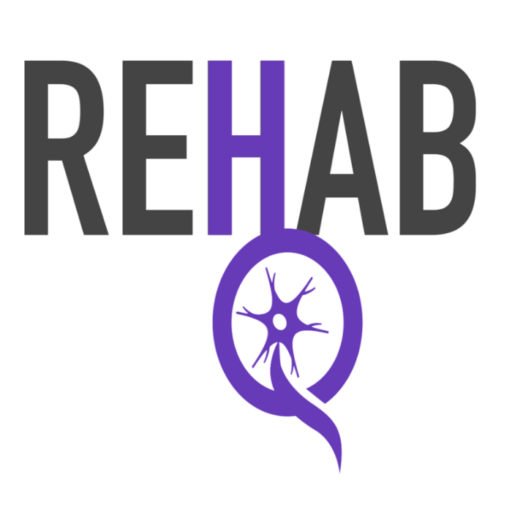A Pontine Stroke is commonly referred to as a pontine CVA or pontine cerebrovascular accident. It is an ischemic stroke that affects a region in the brain stem known as the pons. Not sure why this is important?
The pons communicates between the cerebral cortex and the cerebellum—the coordination center of the brain. Hence, a disruption in blood flow to the pons can lead to a rare condition called Locked-in Syndrome[1] (pseudocoma), whereby nearly all voluntary muscles are paralyzed. This means a person will be conscious and aware, but cannot verbally communicate or move (aside from basic eye movements.)
According to the CDC, in the United States, the frequency of a stroke is every 40 seconds. This means that about 795,000 people have a stroke every year, of which 610,000 are first or new strokes.[2] Ischemic strokes account for about 87% of all strokes.
As with any kind of stroke, early action can save lives. In this article, we’ll cover everything you need to know the symptoms, causes, and treatments for Pontine Strokes.
Pontine Stroke Symptoms
A survey[3] by the CDC revealed that 93% of respondents recognized that sudden numbness on one side was a symptom of a stroke. However, only 38% were aware of other major symptoms.
Delayed care might cause individuals to have more severe disabilities three months after a stroke. It is, therefore, crucial to be able to recognize the symptoms of a stroke and act on them urgently to diminish the long-term damage suffered.
Common symptoms include[4]:
- Difficulty moving or coordinating on the side of the body where the brain has suffered damage from the stroke
- Weakness or paralysis of the body on the opposite side
- Lack of balance or equilibrium
- Inability to speak properly
- Dropping of facial muscles on the side where the damage to the brain has occurred
- Sensory issues on the ipsilateral side
- Weak motor control or dexterity on the contralateral side
The simplest way to determine if someone has had a stroke is to think F.A.S.T:
- Face – ask them to smile and observe if one side of the face droops
- Arms – ask them to raise both arms and notice if one arm drifts downwards
- Speech – ask them to repeat a simple phrase and observe if their speech is strange or slurred
- Time – if you notice any of these signs, call 911 immediately, or drive them to the emergency room for urgent care
Make a note of when the symptoms first appear, as this can help determine the individual’s treatment.
Pontine Stroke Causes
80% of strokes are preventable[5]. Therefore, being aware of what causes them can go a long way in helping at-risk individuals make appropriate modifications to their lifestyle and health and mitigate the risk of suffering a stroke.
The most significant causes of pontine strokes are:
- Long-term hypertension
- Persistent diabetes
- High blood pressure
- Obesity
- Atrial Fibrillation
Those who have already suffered a stroke are also at a higher risk of undergoing a more severe second stroke. Making changes to your diet or lifestyle can reduce the risk of another stroke by up to 27%!
Pontine Stroke Treatment
Most stroke survivors must undergo a personalized treatment and rehabilitation program. This usually includes:
- Meditation
- Physical Therapy
- Occupational therapy
Meditation
30% of stroke survivors experience the neurological symptom of spasticity, which has also been linked to anxiety and emotional stress.
A study[6] was conducted to observe how two weeks of meditation would affect the spasticity and quality of life of patients recovering from a stroke. The results revealed “statistically significant improvements in spasticity in both the elbow and wrist.” it also showed improvements in quality of life with regards to energy, personality, and productivity.
Physiotherapy
Physiotherapy after a stroke is essential as it addresses joint spasms, muscle aches, equilibrium, and paralysis that might occur after a stroke. It also helps patients relearn movements and regain functions that might have been lost due to damage to the brain.
In case you were wondering, physiotherapy can begin as early as 24 hours after a stroke.
It includes exercises ranging from simple eye, hand, and leg movements while seated to walking (gait and speed) and working facial muscles.
While it may not be possible to recover pre-stroke movement and independence, physiotherapy can help patients work on their gross motor skills, coordination and help build strength. And with long-term physiotherapy, a patient can re-integrate with their local community and even return to work.
Occupational Therapy
Occupational therapy is a rehabilitation treatment in which the patient focuses on fine motor skills. Through this strengthening, patients can eventually perform activities of daily living such as bathing, eating, cooking, dressing, grooming, and even driving.
Occupational therapy helps ensure that the patient can function independently, without the help of a permanent caregiver, allowing them to live the remainder of their life independently and with dignity.
Conclusion
Strokes are most often caused by factors within our control. Making healthy changes such as consuming healthy foods and maintaining a diet, frequent exercise, weight control, reducing alcohol and smoking, etc., can go a long way in diminishing the possibility of a stroke.
Taking the effort to control your diabetes, meditating to decrease stress and hypertension, and keeping a check on your blood pressure are small steps that can significantly affect your overall well-being.
These are also good habits for living a long, healthy life, both mentally and physically.
References
- “Locked-In Syndrome.” National Organization for Rare Disorders, 2018, https://rarediseases.org/rare-diseases/locked-in-syndrome/
- “Stroke Facts | cdc.gov.” CDC, https://www.cdc.gov/stroke/facts.htm
- “Stroke Facts Survey | cdc.gov.” CDC, https://www.cdc.gov/stroke/facts.htm
- “Stroke – Symptoms and causes.” Mayo Clinic, 9 February 2021, https://www.mayoclinic.org/diseases-conditions/stroke/symptoms-causes/syc-20350113.
- “Pontine Stroke: Causes, Symptoms, and Treatments.” Saebo, 6 February 2019, https://www.saebo.com/blog/pontine-stroke-causes-symptoms-treatments/
- “Mindfulness Meditation Effects on Poststroke Spasticity: A Feasibility Study.” NCBI, 19 June 2019, https://www.ncbi.nlm.nih.gov/pmc/articles/PMC6585237/

